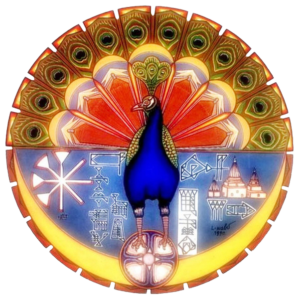Introduction
A sect whose followers believe that if they do not break their fast with red wine, they will become disbelievers. If someone insults Satan, whom they call “Malik Taus,” that person is considered deserving of death in their view. When someone dies, coins are placed in their coffin so the deceased has money to spend in heaven. They consider it forbidden to eat food with Muslims. Eating meat, fish, bottled gourd, cauliflower, beans, and lettuce is strictly prohibited. Who are the Yazidis who hold such beliefs? What is their history, and what are their beliefs? Let’s discuss this topic.
The Yazidis or Yezidis are mostly found in the northeastern autonomous region of Kurdistan in Iraq. The most important holy place for them is in the city of Lalish in Iraqi Kurdistan. These people are ethnically Kurdish, and their religion or sect is called Yazidism. It is important to note that, besides the Yazidis, the Kurdish people also include Muslims, such as Sunnis, Shiites, and followers of Christianity.
History
The history of Yazidism is not confirmed, but historians believe that this religion is around four to seven thousand years old. Over time, it has incorporated various beliefs from Zoroastrianism, Sufism, Christianity, and Judaism.
According to the known history of Yazidism, the founder of this religion is Adi bin Musafir, a member of the famous Umayyad caliph Marwan I’s family. He was born in Baghdad between 1072 and 1078 CE and died in 1162 CE in the northern town of Lalish, near Mosul. His tomb is still there today. However, even before Adi bin Musafir, the city of Lalish was already a sacred place for the Yazidis. When Sheikh Adi began teaching the Yazidis there, they considered him to be an incarnation of God. Yazidis believe that making a pilgrimage to Sheikh Adi’s tomb once a year is an essential part of their religious life.
Since Yazidism is one of the secret religions of the world, historians are not certain about how this religion was founded. Some believe that this religion has been strongly influenced by Iranian culture, and the Persian word “Yazdan” is used for God, which might be why they are called Yazidis. It is possible that this religion originated in Iran.
Others believe that the Yazidis are called so because they highly respect the Umayyad caliph Yazid, who ordered the killing of Imam Hussain (AS), the grandson of Prophet Muhammad.
The Yazidis believe in one God, Allah, but they do not worship Him directly. They believe that God created humans.
Malik Tawus (Satan)?
Along with this, they also consider Ablees (Satan) as their god, but they place him at a lower level than God. They do not directly mention Satan out of fear or respect, and instead, they call him ‘Malik Tawus’.
Malik Tawus means “King of the Peacock,” and they keep an image of him in the shape of a peacock statue in their places of worship. According to them, Malik Tawus led seven angels and created all the animals in the world.

The Yazidis represent Malik Tawus with a peacock statue, which they call “Sanjak” in their language. According to the Yazidis, Malik Tawus appeared on Earth in the form of seven people and guided the Yazidis. These seven people’s names were written on the Sanjak placed at their religious site in Lalish.
In fact, a Sanjak is an object that has the image of Malik Tawus, the peacock, on it. Until 1909, five Sanjaks were present at their holy site in Lalish, each with the name of a person in whose form Malik Tawus had appeared on Earth. According to the Yazidis, these five people were:
- Prophet Dawood (David)
- Sheikh Shamsuddin
- Yazid ibn Muawiya
- Sheikh Adi
- Sheikh Adi Basri
Due to their belief in Satan as their god, Yazidis consider Muslims, Christians, and Jews as disbelievers because these three religions condemn Satan as “the devil.” According to Yazidis, when Muslims say, “I seek refuge with Allah from the accursed Satan” in their prayers, they believe such Muslims deserve to be killed because they insult their god.
Yazidis rarely share their beliefs with others, and they have no religious or historical books. They memorize their history and religious words orally.
If you want to watch documentray about Yazidi religion, please click here
Secret Dogmas
In the 19th century, the Sultan of Turkey sent a representative to the Yazidi region, asking them to join his army. In response, the Yazidis wrote a long letter explaining 14 reasons for refusing, which were unusual and somewhat interesting. These reasons revealed some of the Yazidis’ beliefs to historians. For example, they wrote that…
- It is mandatory for every Yazidi to visit the image of Malik Tawus three times a year. Anyone who fails to do this will be considered a disbeliever.
- It is mandatory for every Yazidi to visit the tomb of Sheikh Adi once a year. Anyone who fails to do this will be considered a Yazidi disbeliever.
- It is mandatory for every Yazidi to visit a place early in the morning to see the sun, where no Muslims, Christians, or Jews live or are present. If any Yazidi breaks this rule, they will be considered a disbeliever.
- It is mandatory for every Yazidi to kiss the hands of their siblings and their spiritual leader daily. Anyone who fails to do this will be considered a disbeliever.
- An important point: When Muslims say during recitation, “A’udhu Billahi Min Ash-Shaytan ir-Rajim” (I seek refuge with Allah from the accursed Satan), if a Yazidi hears these words, it is their duty to kill the person who says them and kill themselves as well. Otherwise, they will be considered a disbeliever.
- When a Yazidi dies, the name of Malik Tawus must be spoken three times in their ear. If this is not done, they will die a death of disbelief.
- If a Yazidi fasts, it is obligatory for them to break their fast with two to three glasses of special red wine from their Sheikh. If they do not do this, their fast will not be accepted.
- No Yazidi can enter a Muslim’s bathhouse or eat with Muslims. Anyone who does so will be considered a disbeliever and will be outside the fold of Yazidism.
With such beliefs, how can a Yazidi live with Muslims or fight alongside them when their beliefs are so opposed to each other?
The importance of the snake in Yazidi religion:
At the entrance of a Yazidi place of worship, a black snake symbolizes respect for nature. They never kill a snake, even if it is poisonous.
According to their belief, when Prophet Noah’s ark came to rest on Mount Ararat or Mount Judi, the ark had a hole in it. During this time, a snake filled the hole with its body and saved all the living creatures aboard the ark from drowning.
Holy City of Lalish, Iraq
According to Yazidi belief, tying colorful silk cloth knots on the pillars of buildings and trees at their sacred site, Lalish, is an important ritual. Each color represents one of the seven angels, and every knot symbolizes a form of worship. Yazidis believe that untying an old knot signifies that the prayers of the previous devotee have been fulfilled.
There are 25 permanent residents in Lalish, including a priest, monks, nuns, and “house servants.” These individuals are responsible for cleaning, repairing structures, gardening, and collecting sacred soil for visitors. They also care for olive and walnut trees, which hold religious significance in Yazidi traditions.
In the Yazidi community, the soil of Lalish is considered a symbol of good fortune, and every Yazidi must possess some of it. This soil also plays a crucial role in their funeral rituals. A mixture of this soil and sacred water is placed on the mouth, ears, and eyes of the deceased. Coins are also placed in the coffin so that the deceased has money to spend in paradise.
The “house servants” in Lalish burn white threads to pray for the healing of the sick, the forgiveness of the deceased, and the prosperity of the living. Yazidis pray at least twice a day facing the sun, as per their religious customs.
At Lalish, 365 lamps filled with olive oil are lit at sunset, symbolizing each day of the year. This lamp-lighting ceremony represents the sun and the divine light of God. Light holds a central role in Yazidi religion, and even the deceased are buried with their faces turned toward the sun.
Yazidis have historically faced persecution due to their unconventional beliefs. This began during the reign of Osman I, the founder of the Ottoman Empire, and has continued to this day. Over 70 instances of genocide against Yazidis have been documented, including atrocities committed by Saddam Hussein and ISIS in recent history.
Yazidi men wear a turban called “Jamadani,” which was originally white. However, in Lalish, it is now red and white, symbolizing the massacres Yazidis have endured.
Organizational Structure
In the Yazidi community, converting to another religion or marrying someone from a different faith is strictly prohibited.
In the organizational structure of the Yazidi religion, the highest religious leader is called the “Ameer,” who is believed to be from the lineage of the religion’s founder, Sheikh Adi bin Musafir. The Ameer resides in the city of Badrah, 20 miles away from the town of Lalish. The expenses of the Ameer are covered by offerings from Yazidi followers.
Below the Ameer is the position of the “Sheikh,” which consists of five families responsible for providing high religious education to the people. Beneath them is the position of the “Faqir” (a type of spiritual leader).
Further down, there are six types of religious classes, which include:
- Qawwal
- Shaush
- Kajak
- Kabana
- Faqriya
- Farash
Yazidis also believe in prophets but do not consider any of them as an incarnation or image of God; they assign different levels of reverence to each prophet.
No person from another religion is allowed to convert to Yazidism, nor can any Yazidi man or woman marry someone from a different religion.
*If you know more about the Yazidi religion, you may share your valuable opinion in the comment box.
If you want to know about Barelvi Islam, Please Click here
Sources
1. The Religion of the Kurds Author: G. R. Driver Bulletin of the School of Oriental Studies, University of London Vol. 2, No. 2 (1922), pp. 197-213 (17 pages) Published By: Cambridge University Press https://www.jstor.org/stable/607757?seq=12
2. The protectors of a 7,000-year-old faith Author: Simon Urwin https://www.bbc.com/travel/article/20230803-in-pictures-the-protectors-of-a-7000-year-old-faith
3. 7000 برس قدیم یزیدی مذہب کے مقدس ترین مقام کا سفر لیون میک کیرن https://www.bbc.com/urdu/articles/c14zvjn4rq9o


An Extra Ordinary Information.